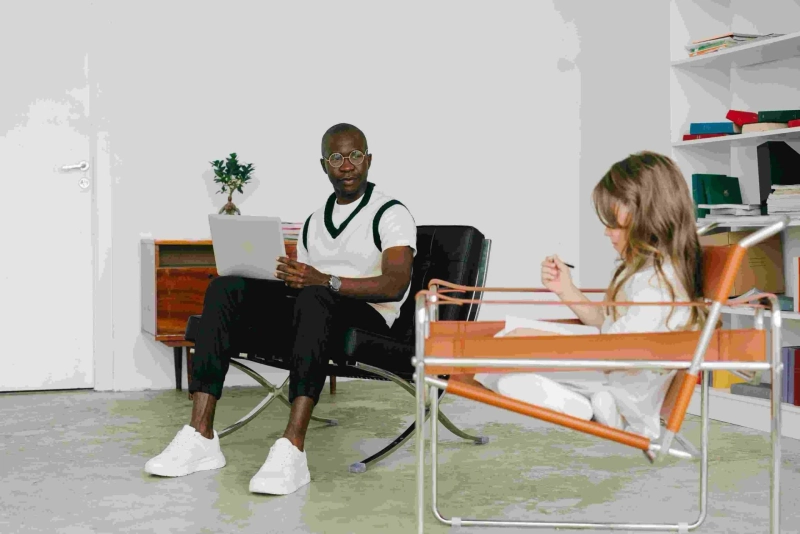Ever wondered what happens in child therapy? Then you’ve come to the right place! Today we’ll be discussing what to expect in child therapy from start to finish. But basically, child therapy is like counselling for children dealing with mental problems. Counselling involves a variety of tailored techniques and approaches to effectively help children facing mental challenges.
To give you more insight into what really happens during child therapy, below is a step-by-step of typical sessions:
1 - Initial Assessment (Start)
The therapist starts with a detailed initial evaluation to gain a complete grasp of the child\'s history, developmental pattern, and difficulties that are currently presenting. This involves careful interviewing, and depending on the situation and the kid\'s wishes, the therapist may choose to meet with the child alone or with their parents present.
To establish a strong foundation for the therapeutic journey ahead, the therapist aims to establish a meaningful connection with the kid and their family through these conversations, in addition to gathering essential information.
2 - Build a trusting relationship with the child
In child therapy, developing a trustworthy relationship is essential since it serves as the foundation for therapeutic development. To give a child the confidence to openly express their ideas, feelings, and experiences, the therapist works hard to provide a safe, supportive, and caring setting.
Using compassionate hearing, affirmation, and sincere involvement, the therapist cultivates an environment in which the child feels acknowledged and comprehended, establishing the foundation for efficacious therapeutic approaches and revolutionary development.
3 - Application of Therapeutic Techniques
To involve children in treatment, child therapists frequently employ creative methods such as art therapy, storytelling, and play therapy. Since some children lack the capacity for language to convey their emotions directly, these strategies help them to communicate their ideas, emotions, and experiences in a non-verbal or symbolic way.
4 - Exploration and Expression
A wide range of stimulating activities are frequently used to influence the analysis of feelings, ideas, and actions; play is one very effective way to learn about and express oneself. The therapist skillfully uses a range of tools and mediums in the therapeutic context, from games and toys to puppets and painting supplies, all of which are carefully chosen to align with the child\'s particular hobbies and communication style.
A child is asked to go on an exploration journey using these interactive methods, where they can freely explore their inner world, try out various roles and situations, and externalise their experiences in a secure and encouraging setting.
5 - Building of Skill
Together, therapists and children develop a wide range of coping skills, from mindfulness and relaxation exercises to cognitive restructuring and problem-solving approaches, giving them the flexibility and resilience they need to deal with the challenges of life.
Also, child therapy provides an environment that is conducive to the development of critical social and interpersonal skills as therapists lead exercises and activities that improve communication, empathy, and conflict resolution.
6 - Parental Involvement
The degree to which therapists include parental engagement in the therapy process will depend on the age, stage of development, and particular needs of the child. To promote family unity and communication, parents should actively participate in therapy sessions with their kids by doing cooperative exercises, having talks, and carrying out treatments.
As an alternative, therapists might meet separately with parents to offer psychoeducation, direction, and assistance in putting therapeutic techniques into practice at home. This collaborative approach empowers parents to participate actively in their child\'s therapy journey and supports long-term improvement outside of the therapy room, acknowledging the critical role that parents play in their child\'s emotional development and well-being.
7 - Setting of Goals and Progress Monitoring
The therapeutic process is a team effort in which the therapist collaborates closely with the child and family to set specific goals that are in line with the kid\'s particular requirements and situation. Using continuous communication and introspection, the therapist fosters a dynamic collaboration to monitor advancements, pinpointing development areas, and tackling new obstacles.
Frequent evaluations of the child\'s behavioural and emotional functioning provide useful benchmarks that the therapist may use to assess the effectiveness of therapies and modify the treatment plan as necessary. By using an iterative method, treatment is kept sensitive and customised to the child\'s changing requirements, creating a nurturing atmosphere that promotes long-term growth and successful results.
8 - Closure and Transition (End)
The child psychologist fosters closure and talks about ways to keep making progress outside of treatment when the child and family are ready to stop or when the goals of therapy have been reached.


